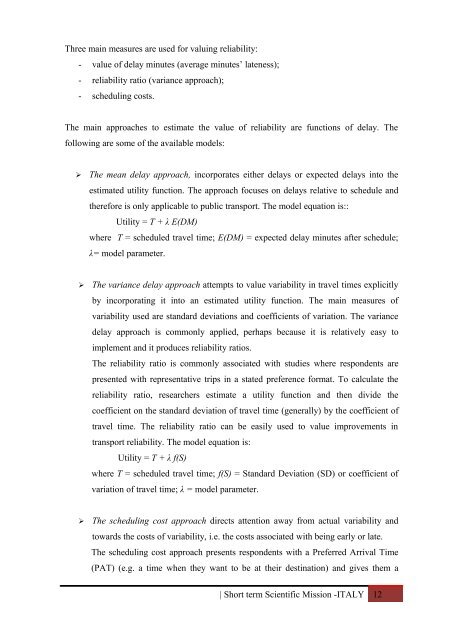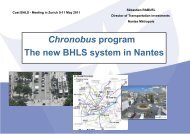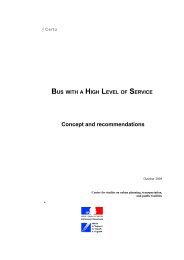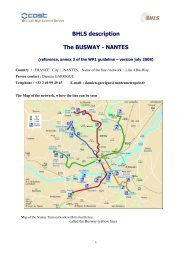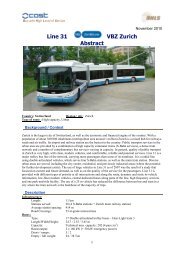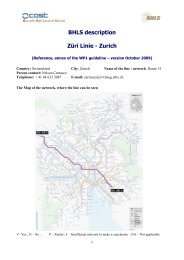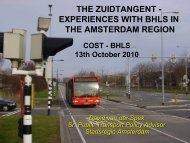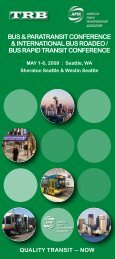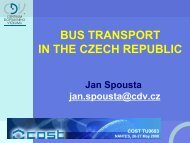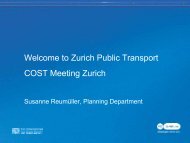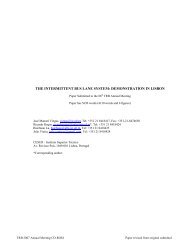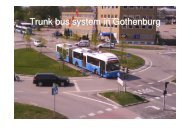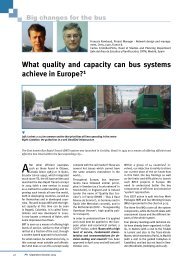RESEARCH APPROACH ABOUT RELIABILITY OF ... - BHLS - HOME
RESEARCH APPROACH ABOUT RELIABILITY OF ... - BHLS - HOME
RESEARCH APPROACH ABOUT RELIABILITY OF ... - BHLS - HOME
Create successful ePaper yourself
Turn your PDF publications into a flip-book with our unique Google optimized e-Paper software.
Three main measures are used for valuing reliability:<br />
- value of delay minutes (average minutes’ lateness);<br />
- reliability ratio (variance approach);<br />
- scheduling costs.<br />
The main approaches to estimate the value of reliability are functions of delay. The<br />
following are some of the available models:<br />
<br />
The mean delay approach, incorporates either delays or expected delays into the<br />
estimated utility function. The approach focuses on delays relative to schedule and<br />
therefore is only applicable to public transport. The model equation is::<br />
Utility = T + λ E(DM)<br />
where T = scheduled travel time; E(DM) = expected delay minutes after schedule;<br />
λ= model parameter.<br />
<br />
The variance delay approach attempts to value variability in travel times explicitly<br />
by incorporating it into an estimated utility function. The main measures of<br />
variability used are standard deviations and coefficients of variation. The variance<br />
delay approach is commonly applied, perhaps because it is relatively easy to<br />
implement and it produces reliability ratios.<br />
The reliability ratio is commonly associated with studies where respondents are<br />
presented with representative trips in a stated preference format. To calculate the<br />
reliability ratio, researchers estimate a utility function and then divide the<br />
coefficient on the standard deviation of travel time (generally) by the coefficient of<br />
travel time. The reliability ratio can be easily used to value improvements in<br />
transport reliability. The model equation is:<br />
Utility = T + λ f(S)<br />
where T = scheduled travel time; f(S) = Standard Deviation (SD) or coefficient of<br />
variation of travel time; λ = model parameter.<br />
<br />
The scheduling cost approach directs attention away from actual variability and<br />
towards the costs of variability, i.e. the costs associated with being early or late.<br />
The scheduling cost approach presents respondents with a Preferred Arrival Time<br />
(PAT) (e.g. a time when they want to be at their destination) and gives them a<br />
| Short term Scientific Mission -ITALY 12


